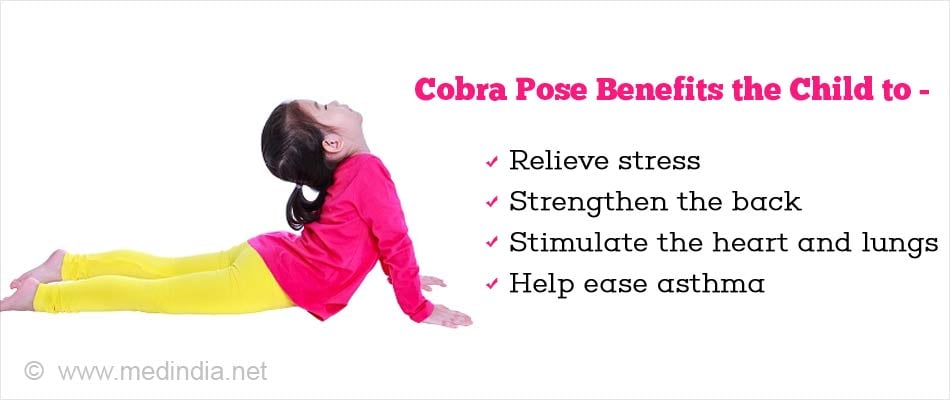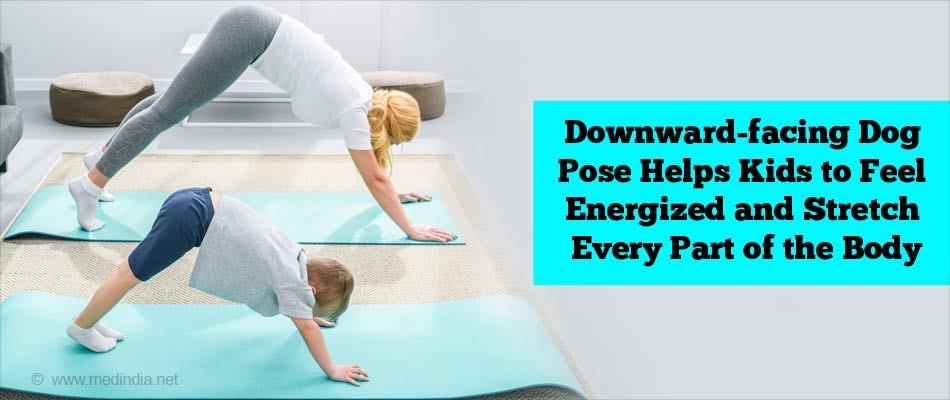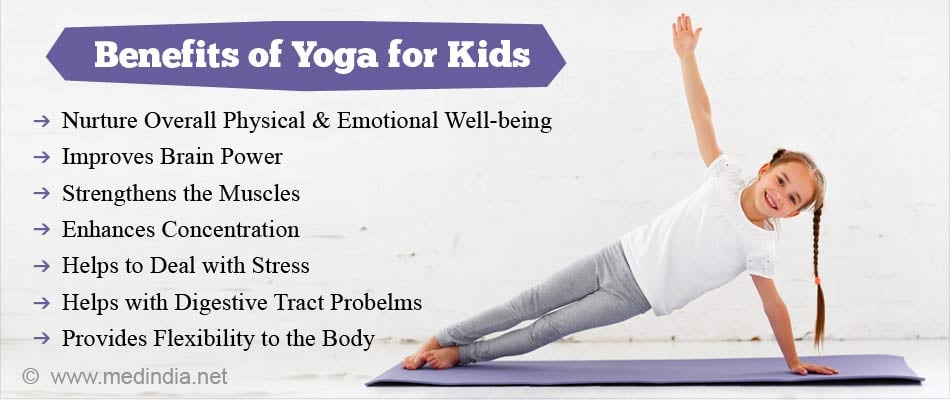- Iyengar BKS. Yoga: The Path to Holistic Health. London: Dorling Kindersley Limited; (2008);
- Büssing A, Michaelsen A, Khalsa SBS, Telles S, Sherman KJ. Effects of yoga on mental and physical health: Med (2012);
- Telles S, Singh N, Yadav A, Balkrishna A. Effects of yoga on different aspects of mental health. Indian J Physiol Pharmacol (2012);
- Solberg E, Eifring H, Holen A. Yoga og helse. Dyade (2011);
- Ross A, Thomas S. The health benefits of yoga and exercise: a review of comparison studies. J Alternat Complement Med (2010);
- Henningsen K. The Benefits of Yoga for Children. Kaplan University; (2013);
- Wenig M. Yoga for Kids. (2013)
Should Kids do Yoga?
Introducing yoga exercises for kids right from the school age helps nurture the child’s physical as well as emotional well-being. A recent study done in the United States revealed that, on an average, children spend 12 to 15 years of their life in school. In today’s age, when kids are exposed to a lot of pressure for studying and performance at school along with peer competition, yoga practice can help children deal with stress.
For healthy physical and emotional growth of the child, yoga provides an avenue where the child can learn to relax, meditate, enjoy, and be able to reflect on the little challenges faced each day. It also advises a simple yet nutritious diet for children. This includes foods such as whole grain foods, fruits and vegetables that are naturally available. Children’s yoga classes are different from the traditional yoga classes for adults that can sometimes come with rigorous practice of asanas or postures. Here, having fun and introducing kid‑friendly yoga asanas is the key.
Yoga Poses for Kids
A leading figure in the kids’ yoga movement, Jodi Komitor, says yoga for children is a fine source for building a child's future. Globally, various institutions conduct children's yoga classes that help them face the daily stress in a healthy manner.
Yoga for preschoolers and even toddler yoga can be very satisfying as learning breathing exercises and improving their coordination and balance at this young age helps children excel in the various challenges they face in the future. Easy yoga for kids is all about integrating kid-friendly yoga poses with music, art, storytelling, and so on.
You won’t need any yoga accessories except for a yoga mat and your creativity. Interactive storytelling is one of the best ways of teaching yoga to children. E.g., telling a story about a trip to a jungle where yoga moves for kids could include poses of animals or things. Following are some such poses.
- Mountain pose: Stand straight and tall with feet slightly apart. Slowly rise up on the toes. The back should be straight with shoulders pressed behind. Press the hands together in the Namaste (praying hands) position and maintain the position for a minute. This pose improves the child’s balance and posture and strengthens the muscles of the legs.
- Cobra pose: Lie on the floor with the chest facing the floor. Place the palms flat on the floor near the shoulders. Slowly lift the chest up by straightening the arms and inhale deeply. Maintain this position for 30 seconds and then slowly exhaling, go down back to the floor. This pose relieves stress, strengthens the back, stimulates the heart and lungs, and helps ease asthma.

- Cat pose: Place the knees and hands on the floor and lift the back parallel to the floor. The knees should be in line with the hips and the elbows, wrists, and shoulders should be in a straight line. The eyes should face the floor. Inhale in this position, and then slowly exhale while arching the spine upwards but still maintaining the hands and knees in the same position. This pose stretches the neck, back, and chest, and gives flexibility to the body.
- Downward-facing dog pose: Place the hands and knees on the floor with knees below the hips and hands in front of the shoulders. On exhalation, lift the knees and straighten the legs with the toes still touching the floor. The head should be between the arms, facing the floor. Hold this pose for a half to one minute and slowly release. This is a great pose to feel energized and stretches every part of the body.

- Happy baby-yoga pose: This is yet another great move for toddler yoga. For this, the child should lie on the back and bend the knees to the stomach. Then, knees should be extended by holding the feet with the hands and maintain this pose for few seconds. This posture calms the brain and provides relief from fatigue.
- Rock-n-roll yoga: Lie on the back and slowly draw the legs towards the stomach with knees bent. Hug the knees with both hands. This is a great move to warm up or relax between other exercises. This pose relaxes the spine and helps with indigestion, bloating, constipation, and other digestive problems.
Benefits of Yoga for Kids
Yoga for children is extremely beneficial as it helps shape the brain and body of the young ones to achieve balance, body awareness, self-resilience, and a good personality. Yoga enhances concentration and patience, and helps with brain development. Over the years, it has been observed that children usually hide their problems from the parents, in trying to be the perfect children with “socially appropriate” behavior. This could lead to the beginning of suppressed emotions, depression, and other issues.

Yoga for Kids Needs Supervision
It is important for parents and yoga teachers not to push a kid too far in trying out complicated yoga poses even if the kid is enthusiastic and keen on trying. Incorrect postures can harm a child’s developing bone and muscle structure. Certain asanas can place a huge amount of stress on the child’s spine and back and cause back pain at a very young age.
While teaching kids, yoga instructors should keep an eye on the kid’s balance and stress the need for paying attention before doing the pose. This way the child can avoid falls while doing a pose or muscle strains from faulty posture.
With necessary precautions yoga is the perfect tool to bring the mind and body into harmony and provide the right emotional balance and may very well be considered a boon for children of all ages.







